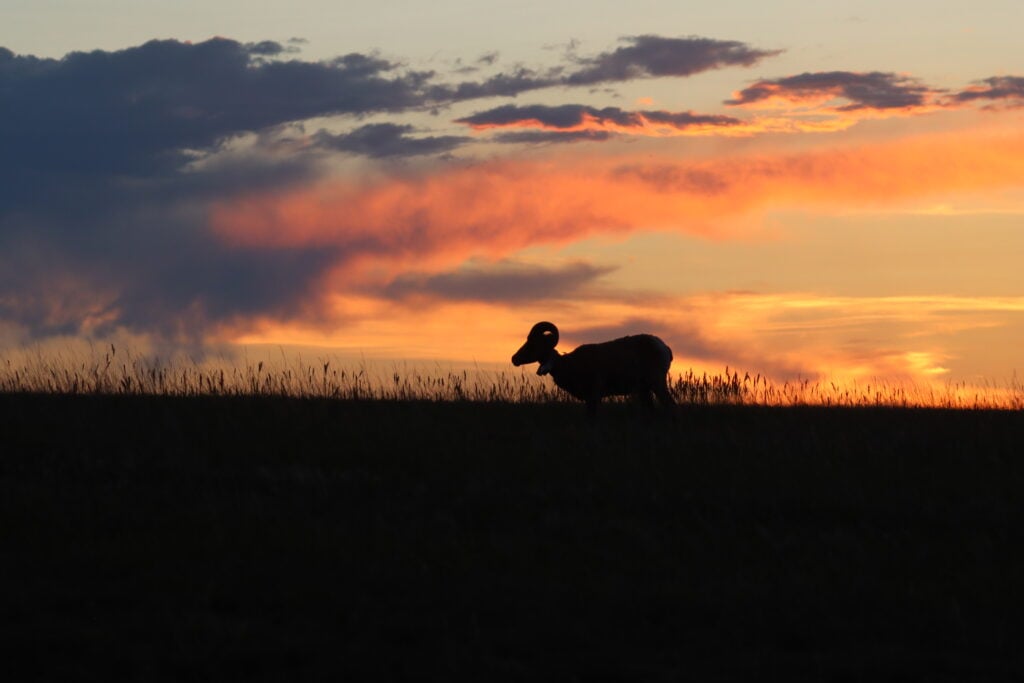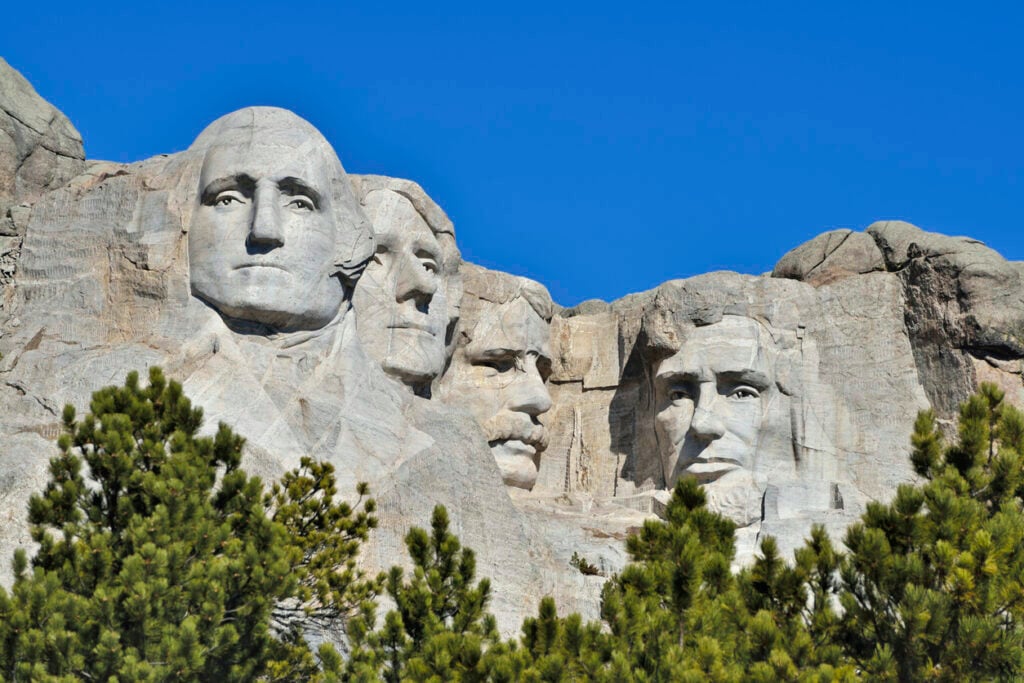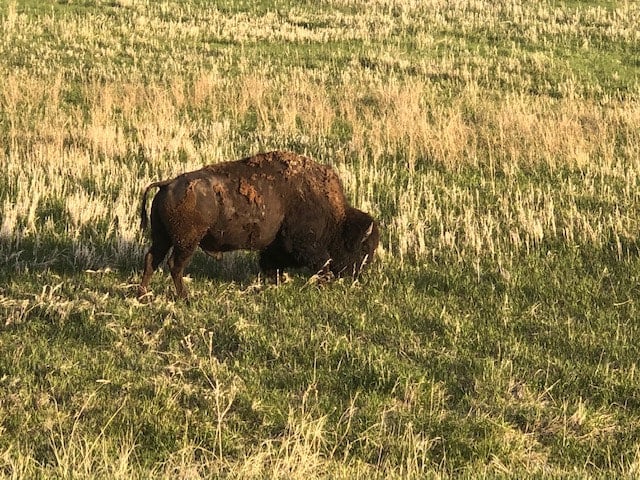Devils Tower isn’t just a stunning geological marvel—it’s a landmark brimming with mystery, cultural significance, and awe-inspiring beauty. Many travelers are drawn to its towering columns, but few know the fascinating stories behind its formation and the legends tied to its sacred status. From its origins as an igneous masterpiece to the Native American myths etched into its history, the Devils Tower story offers something for every curious explorer. Whether you’re captivated by its geology or its place in Indigenous culture, this post will guide you through the wonder of Devils Tower and inspire your next adventure.
The Geological Marvel of Devils Tower
Devils Tower, an iconic 867-foot monolith in the Bear Lodge District of the Black Hills, has captivated geologists for centuries. Its formation remains shrouded in mystery, with the most accepted theory suggesting it is an igneous intrusion—a mass of molten rock that solidified underground before being exposed through millions of years of erosion.
Its striking hexagonal columns, some reaching up to four feet wide, formed as the huge rock cooled and fractured, giving the tower its signature ridged texture. These columns are rare worldwide, making Devils Tower an exceptional natural wonder.
Around its base, the Red Beds and Spearfish formations add layers of geological intrigue. These colorful sedimentary rocks date back to ancient seas, and their crimson hues contrast beautifully with the greenery of the surrounding forests. Nearby, the Little Missouri Buttes form a geological family with the lesser-known but equally ancient tower, showcasing nature’s artistry on a different scale.
Formation Theories: A Mystery Encased in Stone
Devils Tower is a testament to the earth’s dynamic processes, but its origins remain a mystery. Geologists have proposed several theories to explain its formation, each offering a different perspective on the forces that might have sculpted this iconic landmark.
- Igneous Intrusion Theory: The most widely accepted theory is that Devils Tower is an igneous intrusion—a mass of magma that rose toward the earth’s surface but cooled and solidified before fully erupting. Over millions of years, surrounding sedimentary rocks eroded, leaving the hard, resistant igneous rock exposed as the tower we see today.
- Laccolith Theory: Another possibility is that Devils Tower formed as a laccolith, where magma intruded into sedimentary layers, causing an uplift. Although it cooled underground, erosion eventually exposed the hardened magma. This theory suggests that the tower’s formation began with a rounded dome, which ultimately eroded to reveal its vertical columns.
- Volcanic Plug Theory: Some suggest that Devils Tower may have started as a volcanic plug—the hardened lava that solidified within a volcano’s vent. While this theory is less popular, it could explain the tower’s cylindrical shape and vertical columns. However, little evidence of volcanic material or remnants around the tower makes this theory unlikely.
Each of these theories presents unique insights, but no definitive answer exists to the tower’s formation. What remains clear is that Devils Tower is the product of a rare and complex igneous intrusion, erosion, and structural resilience process.

Phonolite: The Unique Rock That Shapes Devils Tower
Phonolite is notable for its fine-grained texture and high alkali content. Unlike basalt or granite, phonolite has a unique mineral composition, including nepheline, feldspar, and aegirine, which gives it a dense and durable quality.
- Why Phonolite? The presence of phonolite is significant because it suggests that the magma that formed Devils Tower was low in silica but rich in alkali metals like sodium and potassium. This unique composition is part of what allows phonolite to fracture into hexagonal columns as it cools, creating the tower’s distinctive ridged surface.
- Hexagonal Columns: The phonolite in Devils Tower formed hexagonal columns as it cooled and contracted, a process known as columnar jointing. This feature is rare and adds to the tower’s allure, giving it an almost sculptural appearance. These vertical striations are arranged vertically; some are up to 12 feet wide and hundreds of feet tall.
Phonolite is both a geological rarity and a natural wonder. While common rocks like granite and basalt often make up other natural formations, phonolite’s presence here adds to the tower’s mystique and durability.
Geological Timeline: How Old is Devils Tower?
Determining the exact age of Devils Tower has been challenging for geologists, but estimates place its formation around 50 million years ago, during the Eocene Epoch. Here’s a look at how the formation might have unfolded over time:
- 50 Million Years Ago: Magma began to push up from deep within the earth, creating an igneous intrusion. The sedimentary layers surrounding the intrusion would have added pressure, shaping the cooling rock into its columnar structure.
- Erosion Unveils the Tower: The softer sedimentary layers surrounding the igneous rock eroded over millions of years. Wind, rain, and other natural forces wore down the layers, exposing the tower we see today.
- Present Day: Devils Tower is a monument to this ancient process. Its phonolite columns remain remarkably resistant to erosion, a testament to the rock’s unique properties and the tower’s solid, enduring form.
Additional Geological Features: Surrounding Formations
Devils Tower is part of a larger geological story that includes the Red Beds and Spearfish formations around its base. These sedimentary rocks, colored in rich hues of red and gray, provide a vivid contrast to the tower’s dark phonolite columns. The Red Beds, composed mainly of sandstone, mudstone, and shale, are remnants of ancient floodplains, while the Spearfish formation reflects a time when shallow seas covered the region.
Red Beds and Spearfish Formations
The Red Beds and Spearfish formations offer vibrant red, gray, and green sedimentary rock layers, remnants of ancient sea beds and river systems. These formations serve as a living timeline, each layer reflecting a different geological era.
Legends and Sacred Names: Native American Connections
Long before settlers arrived, Devils Tower held a deep spiritual significance for many Native American tribes, who refer to it by names that honor its mystique as part of the Black Hills. For the Lakota, it is Mato Tipila— Bear Lodge. According to oral history, a group of children was saved from a giant bear by Wakan Tanka, who lifted them to safety atop the tower, where the bear’s claw marks left grooves along the stone as it tried to climb, hence the name Bear Lodge. These deep claw marks are discussed in many stories, and the giant bear is said to have made its way Southeast, coming to rest at what is known as Bear Butte.
Other tribes, including the Kiowa, Crow, and Cheyenne, share similar tales of bravery, resilience, and spiritual connection to the tower. These names reflect its role as a sacred space, not just a natural landmark, and they continue to be recognized and honored today.
A multitude of stories exist within the oral traditions of Native American Tribes. Outside this, some believe that Devils Tower is a giant Tree Rock, petrified from long ago. Regardless, the Bear Lodge area of the Black Hills is to be respected by visitors due to its cultural significance.
The visitor’s center houses oil paintings by Herbert Collins illustrating the giant bear.
Ceremonial Significance and Respecting Sacred Practices
Each year, Native American tribes gather at Devils Tower for ceremonies, including offerings of prayer ties and the Sun Dance, a sacred ritual performed to honor connections with ancestors. These ceremonies remind all visitors of the tower’s spiritual depth and its ongoing importance in Indigenous culture.
Visitors are encouraged to be mindful of cultural practices, especially during June, when Native ceremonies are common. Respecting these customs by keeping noise low, staying on designated trails, and avoiding climbing during June is essential for preserving the site’s cultural integrity.
The Naming of Devils Tower
The tower’s current name, “Devils Tower,” is believed to be a mistranslation from an early military expedition that misinterpreted Indigenous descriptions. While efforts are ongoing to restore a name that aligns with Native languages, such as Bear Lodge National Historic Landmark and Grizzly Bear Lodge, “Devils Tower” remains the official title—a terrible reminder of the importance of preserving cultural heritage accurately. We support the name change of Devils Tower, if not for its beauty alone.
Becoming America’s First National Monument
In 1906, President Theodore Roosevelt declared Devils Tower the nation’s first national monument, cementing its importance as a symbol of natural beauty and conservation. This designation not only protects the site but also honors Roosevelt’s vision of preserving the United States’ unique landscapes for future generations.
Inside the visitor center, you can find information about the park history. There’s a great bookstore of Native American and modern park history.
Climbing History and Modern Challenges
The first recorded ascent of Devils Tower National Monument was made by William Rogers and Willard Ripley.
Today, rock climbers worldwide visit Devils Tower, drawn by its challenging pitches and historical significance. However, when considering rock climbing, please respect June’s voluntary closure to honor Native ceremonies. For rock climbers wishing to scale its heights, Devils Tower provides an unparalleled adventure, provided they respect the guidelines set forth by park officials and Indigenous communities. If you’re a rock climber and would like to climb to the top of Devils Tower we recommend Sylvan Rocks.
The Ecosystem: Flora, Fauna, and Fire
The area around Devils Tower National Monument boasts an extraordinary ecosystem. The tower itself is host to hardy lichens, which thrive on its rock face and lend subtle hues of green, orange, and black to its surface.
The surrounding landscape, a mix of ponderosa pine forests and open prairie is home to diverse wildlife. Prairie dogs can be spotted near the entrance, hawks soar overhead, and seasonal wildflowers add color to the area. Wildfires play a natural role here, shaping the landscape by clearing underbrush and encouraging new growth, highlighting nature’s renewal cycle.

Planning Your Visit
For those ready to explore, here’s everything you need to know to make the most of your visit to Devils Tower National Monument. The National Park Service provides tons of information for visitors.
- Best Times to Visit: Spring and fall offer mild weather, fewer crowds, and vibrant foliage. Summer is busy, so consider visiting early in the day or late afternoon. A traffic light has been installed during summer to regulate traffic, and wait times can exceed 45 minutes. Park rangers monitor the flow of traffic and entry to the park.
- Park Entrance: The park entrance to Devils Tower National Monument is accessed from I-90 or WY-24, which is our favorite. Call the park service for more details.
- Parking and Entry Cost: Parking is limited, especially in peak season. There’s a per-vehicle entry fee, which varies, so check online for current rates.
- Visitor Center and Facilities: The visitor center provides fascinating exhibits on the tower’s geology and cultural history, provides maps, trail information, facilities and gift options. Plan to use restroom facilities at the entrance, as there are no facilities on the trails.
Exploring The Amazing Devils Tower
Hiking Trails and Boulder Fields
Devils Tower offers a range of trails suited to various experience levels:
- Tower Trail: This 1.3-mile loop is paved and family-friendly, offering close-up views of the tower and interpretive signs that share its history.
- Red Beds Trail: This 2.8-mile loop trail provides more secluded views, passing through forested areas and striking red rock formations.
The boulder fields around the tower are a natural marvel and a favorite spot for photographers. These massive rocks, strewn around the base, are remnants of the tower’s ancient formation process and offer visitors a unique perspective.
Lichens, Wildfires, and the Natural Landscape
The lichens that cling to Devils Tower play a crucial role in its ecosystem, creating tiny microenvironments that support various forms of life. Naturally occurring wildfires have also shaped the landscape around the tower, preserving the balance between forest and prairie.
The Little Missouri Buttes: A Nearby Natural Wonder
Not far from the tower, the Little Missouri Buttes serve as the tower’s “siblings.” These formations, similar in age, showcase the same geological processes that shaped Devils Tower National Monument, making them worth a visit for a more secluded experience.
Climbers, Conservation, and Responsible Tourism
For climbers, Devils Tower National Monument offers an irresistible challenge. Yet, it’s essential for climbers to respect Native customs and park guidelines. Visitors are encouraged to tread lightly, respect all signage, and leave no trace.

Devils Tower is A Monument of Nature and Culture
Devils Tower National Monument stands as a testament to the power of nature and the enduring cultural legacies that imbue it with meaning. This landmark is more than a sightseeing destination—it’s a place where stories are woven into the rock itself and where every visitor becomes part of its ongoing story. So, when planning your visit, come with respect, curiosity, and a willingness to see beyond the stone.
For additional resources on park hours, entry fees, and cultural guidelines, visit the National Park Service Devils Tower page and consider looking up local Indigenous websites for more on cultural practices and respectful tourism. In addition, Devils Tower History Association provides great resources and information about the preservation of Devils Tower. Click here to access the Devils Tower History Association.
Experience the Wonder of Devils Tower with My XO Adventures
Devils Tower is more than a destination—it’s a journey through the stories of ancient geology, Native American legend, and awe-inspiring natural beauty. While its towering presence captivates from afar, the true magic lies in immersing yourself in its history and hidden wonders.
That’s where we come in. At My XO Adventures, our Devils Tower Tour transforms your visit into an unforgettable adventure. Dive into the legends, explore breathtaking trails, and uncover the geological secrets with our expert guides by your side. Whether you’re a nature enthusiast, a history lover, or simply seeking an extraordinary escape, our tour brings the tower to life like never before.
Don’t just read about it—experience it! Secure your spot on our Devils Tower Tour today and let us help you create memories that will last a lifetime. Click below to book your adventure!





